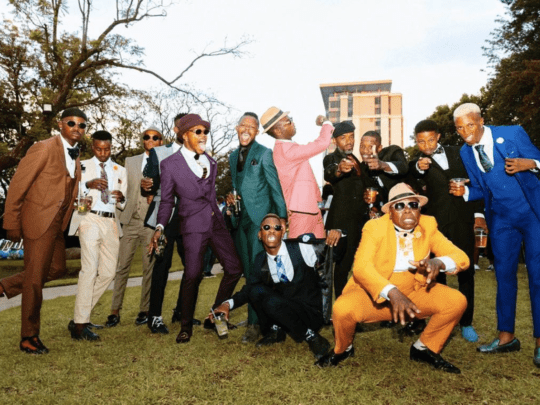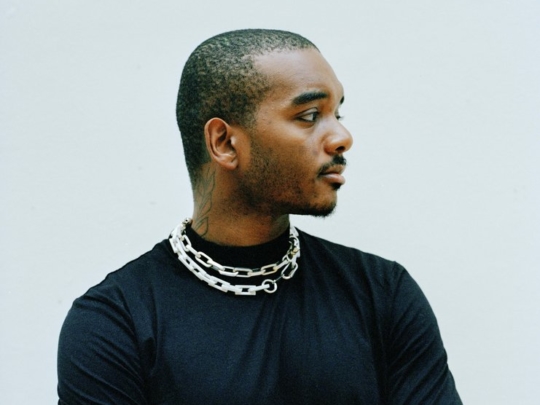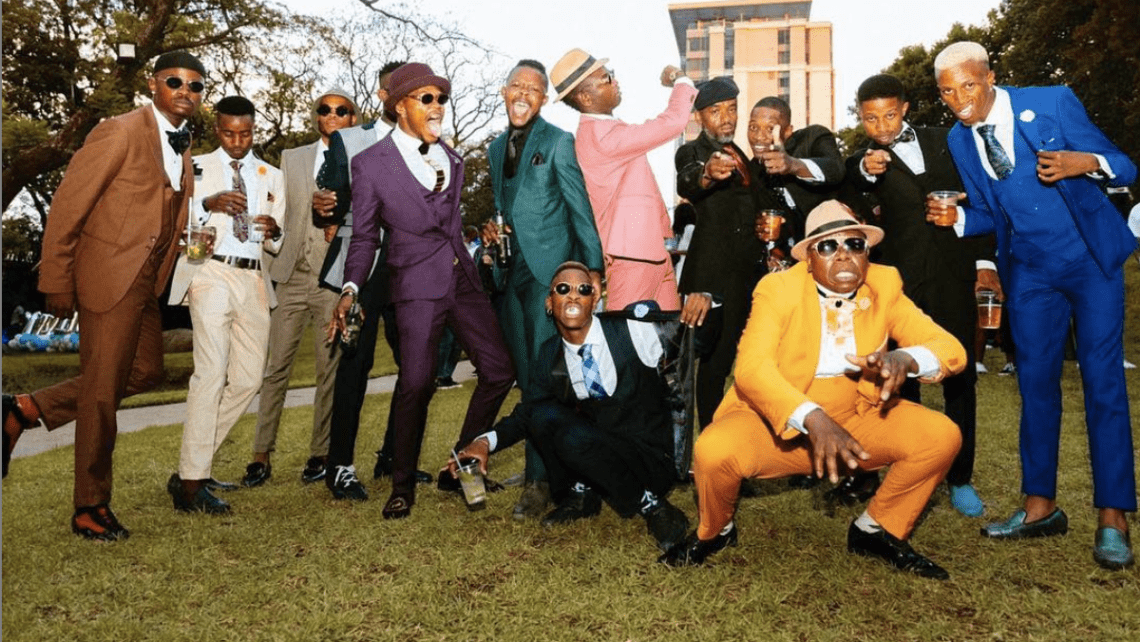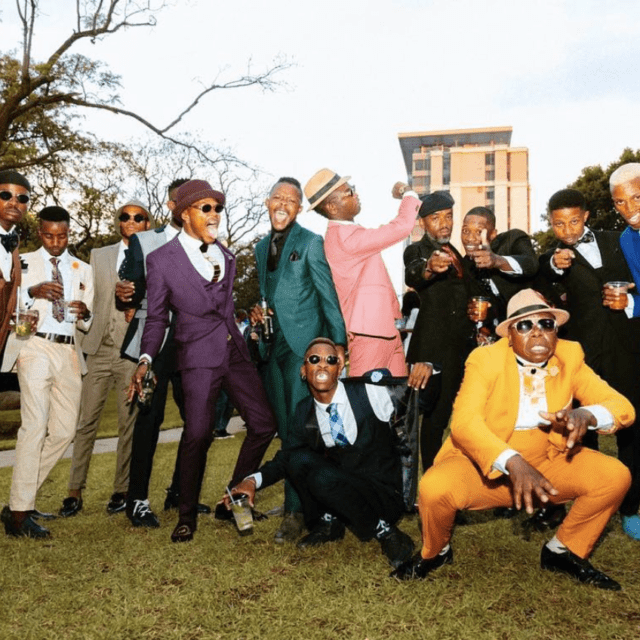Ostentatious is the word that summed them up. They wore brightly coloured designer clothes and the flashiest of jewelry. They were the kids from the townships of Jo’burg who wanted their moment in the spotlight – why shouldn’t they indulge in fashion, in displays of wealth, in conspicuous consumption? After all, they lived in the City of Gold.
Ten years on, the Skhothanes – from a Zulu term that might be loosely translated as ‘to show off’ – have morphed into a social media phenomenon. Today, their influence plays out online, specifically Instagram.
Back in the early years, Skhothane gatherings became the stuff of legend, lapped up by the international media. The footage focused on lavish parties with township youths in bucket hats and Italian designer labels, clutching bottles of Johnny Walker Blue Label and Ultra Mel custard. Journalists breathlessly reported that group members funded their lifestyles through crime. Tearing, spilling and wasting in dance battles between rival crews, the Skhothanes were the dare devils, the greedy, hedonistic children of parents who had known only struggle.
Or were they? Vice published an article in 2016 suggesting that the Skhothanes were not as transgressive as the media led the world to believe. Leader of crew Material Culture Tshepo Pitso (a.k.a Material Don Dada), blamed the press for demonising the movement, even encouraging them to burn designer shoes and tear up the clothes. “So I’m fixing things now” Pitso told Vice, determined to turn things around.









